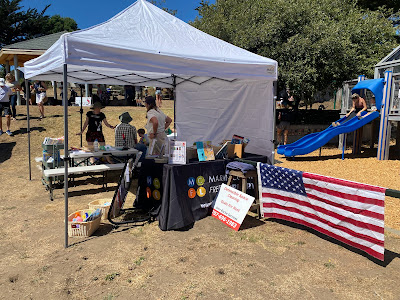It'll be in the print edition this Sunday under the headline, "Young and Homeless in Rural America." An excerpt from the story by Samantha M. Shapiro, follows. The focus here is on a family, with children and youth, becoming unhoused in southern Ohio. One of the teens is named Blake:
Families like Blake’s don’t fit easily into the “homeless industrial complex,” as some advocates for homeless youth and families have taken to calling the funding mechanisms, rules and priorities that determine the fates of millions of Americans who struggle with housing insecurity every year. The system is focused largely on adults experiencing homelessness in cities, and it is not well equipped to address the types of homelessness experienced by children and families, especially in rural areas. The limited data that exists suggests that rural students face homelessness in roughly the same proportion as their urban counterparts — and with far less in the way of a support system. In this vacuum of resources, schools sometimes offer the only form of help available to homeless families.
Over the course of reporting in rural Ohio, I spoke with school officials, homeless advocates, students and their families. I met young people living in trailers that stank of sewage, mothers sexually harassed by predatory landlords, families who could not take their children to the doctor because they could not afford gas for the long trip. For all of them, the stakes of precarious housing were high. Homeless students have the worst educational outcomes of any group, the lowest attendance, the lowest scores on standardized tests, the lowest graduation rates. They all face the same cruel paradox: Students who do not have a stable place to live are unable to attend school regularly, and failing to graduate from high school is the single greatest risk factor for future homelessness.
* * *
[T]he reporting by McKinney-Vento liaisons [required by a federal law passed in 1987], aggregated by the Department of Education, represents a crucial and rare effort to quantify the problem of student homelessness, especially in rural areas. The D.O.E. definition of homelessness is broader than the one used by, for instance, the Department of Housing and Urban Development, and better able to capture what homelessness usually looks like for rural youth and families — Blake’s family living in a cramped camper on a hill or families doubled up sometimes in unsafe situations hidden from sight — as opposed to living on a street or in a shelter. In 2019, the last year of reporting before the pandemic, HUD’s annual “point in time” count on a single night found 53,692 parents and children experiencing homelessness. Over the course of the same school year, the D.O.E., using data from McKinney-Vento liaisons, counted 1.4 million school-age children as homeless.
When schools shut down during Covid, so did the primary way of identifying and assisting children experiencing homelessness.
* * *
In rural areas, schools can be an island of resources. ... [Becky Handa of Athens County Children's Services] is able to offer a lot to families in the school — her office is crammed with food and supplies — but one problem has been especially frustrating. The sparse, often substandard housing in the county is falling apart, leaving families with few safe or affordable places to stay.
The story explains that McKinney-Vento "requires public schools to ensure that children without homes have 'equal access to the same free, appropriate public education' as children with homes."
An April New York Times story on homeless youth in rural Texas is here. A story about exurban homelessness in Maine, from the Portland Press-Herald, is here. Prior posts on rural homelessness are here and here. A policy brief on the rural housing crisis in California is here.














